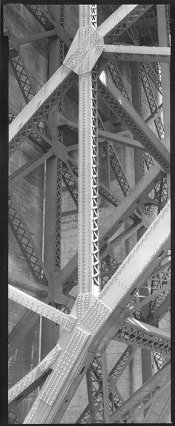It's basically the same thing, though. In my example a single large pixel was divided into four smaller pixels, but I could just have said that doubling the amount of pixels would allow for a smoother gradient on the global scale. Micro-contrast is important here, but too much of it isn't good either as the tonality would be percieved as less smooth.
Sure they are connected, as I started out by saying, everything is connected if you know enough.
If four "primitives", be they pixels or crystals, (though I'm not crazy about calling silver halide crystals primitives (the real primitive here is the sensitivity centers, activated by three or more photons)), display a range of contrast, it's impossible to determine whether you are seeing just raw resolution and acutance, or ability to discern fine differences in gradients.
What you are talking about is really resolution. Though made cryptic to yourself with the wrong semantics and words.
There is a limit to how many steps a human can determine within a given contrast range.
Within the possible range from base fog to Dmax of even the densest film, you are is more than amply covered, with what film can display within very little space (of course it varies with the stock).
Within the statistical cluster of the perceptive "grain", there is as much range as is possible for the whole global frame.
More dynamic range and a straight (possible) curve is of course always desirable, but that is much the same (if not exactly the same) between film formats.
Development chemistry and process plays various tricks with edges and sharp transitions in the negative. So tonality is still a thing here, but not as much determined by the stock itself, as with less contrasty areas of the film.
What I
will give you is that the aforementioned edge effects on LF is less than on MF, where they are again less than with 135.
But that has little to do with what is being discussed here.


 .
.
